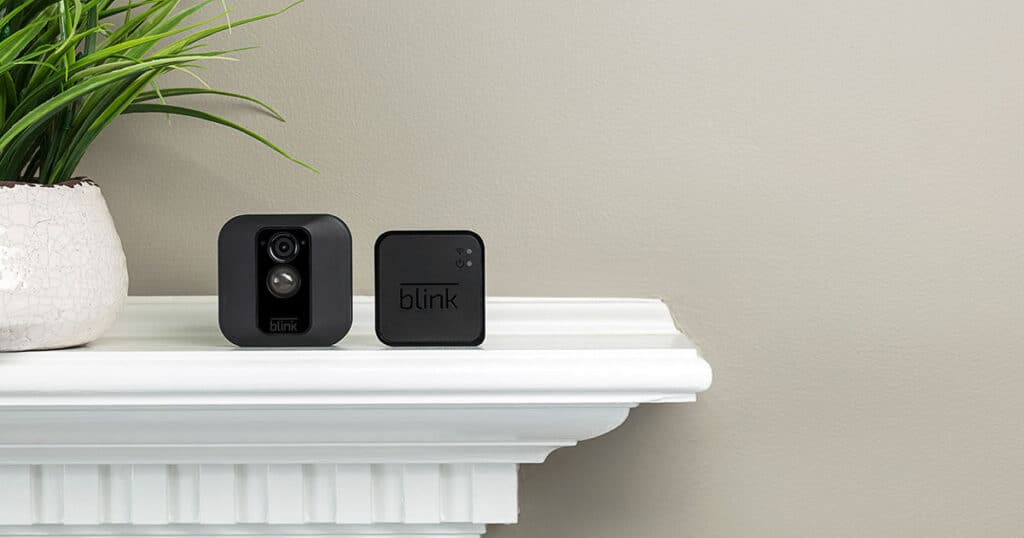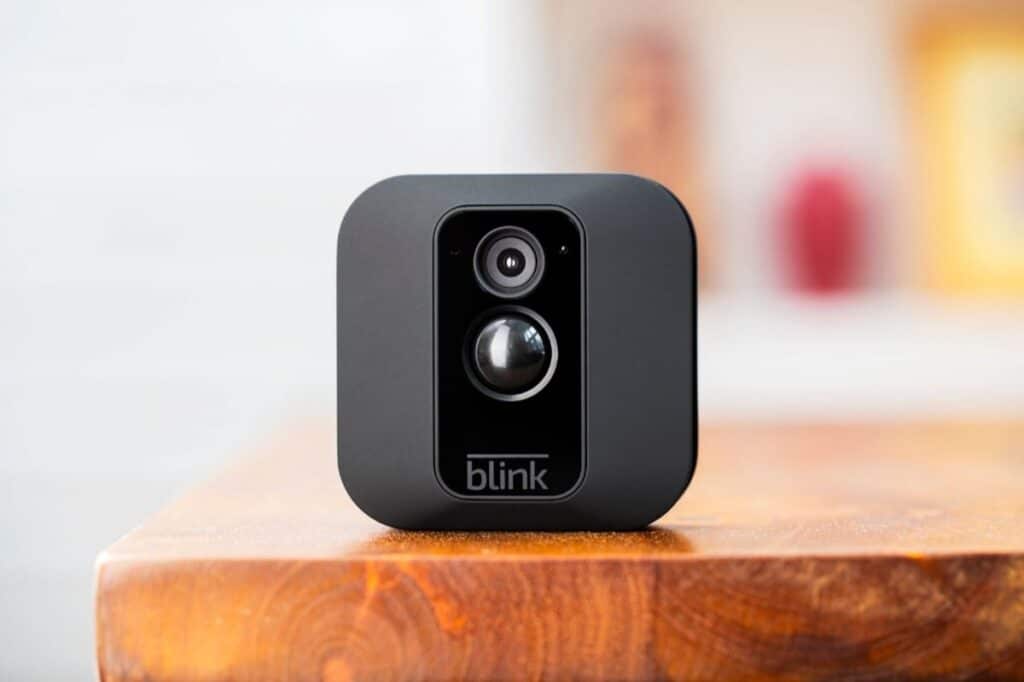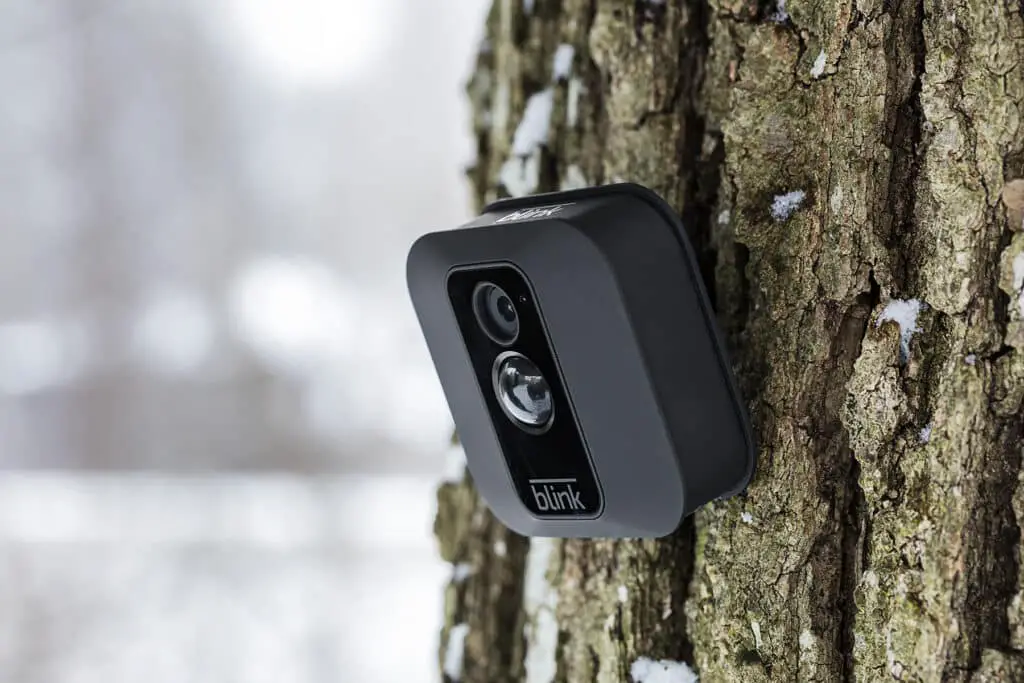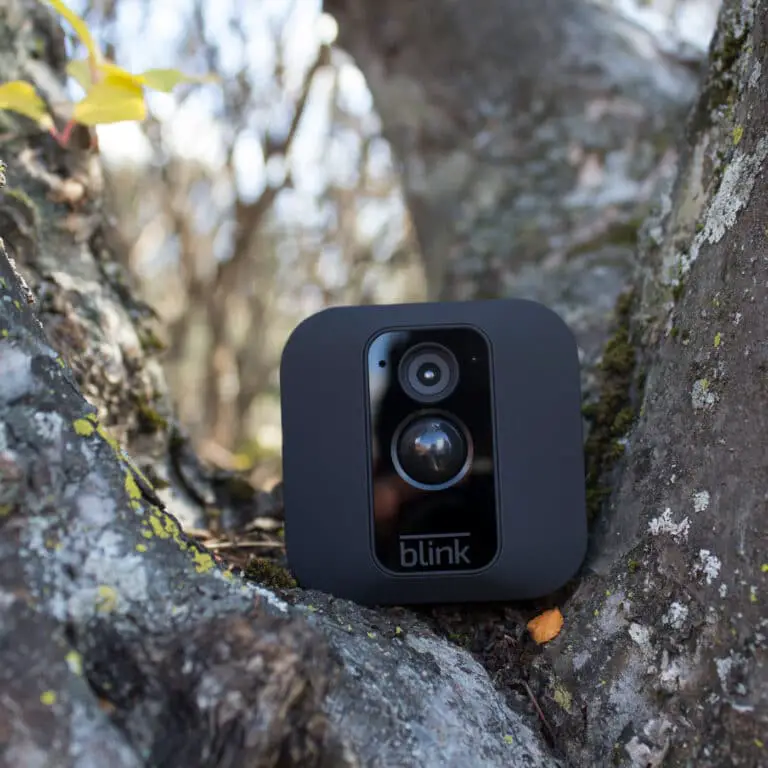Introduction
How To Hide Blink Camera: Home security has become an increasingly vital aspect of modern living, and with the rise of smart technology, many homeowners have turned to innovative solutions like the Blink Camera to safeguard their properties. The Blink Camera is a popular and user-friendly device that offers high-quality video monitoring, motion detection, and remote access through smartphone applications. However, some users may find it necessary or preferable to conceal their Blink Cameras from view to ensure greater security and maintain a sense of privacy.
Not only will hiding your Blink Cameras help you avoid possible thieves, it will also keep people from staring at it when you’re not there. The goal of this guide is to give homeowners the necessary information and tips to hide their Blink Cams without hurting their usefulness. Look into creative and smart ways to place the camera, like using things that won’t draw attention to themselves or building the camera right into the structure of your home.
We will also talk about how important it is to keep the camera’s line of sight clear so that it can record relevant footage without drawing attention to itself. This guide will also talk about possible legal issues that come up with spying and privacy, because it is important to follow local laws and rules when setting up hidden cameras.

How can I hide my Blink camera outside?
A great trick to hide outdoor security cameras is by placing them behind trees, bushes, or even within a fake hanging potted plant. The leaves can hide the camera’s body to make it less noticeable. Just make sure the lens itself is not covered with branches or leaves.
Hiding your Blink camera outside requires a thoughtful approach to ensure effective surveillance without drawing unnecessary attention. Here are some key tips on how to achieve this:
Camouflage
Choose a location for your Blink camera that naturally blends with its surroundings. Utilize natural elements like foliage, shrubs, or trees to conceal the camera partially or entirely, making it less conspicuous to passersby.
Weatherproofing
Ensure your Blink camera is equipped with weather-resistant housing or purchase appropriate outdoor enclosures to protect it from harsh weather conditions. This will not only keep the camera hidden but also prolong its lifespan.
Elevation and Angle
Position the camera at a higher elevation and at an angle that allows for a broad field of view. This ensures optimal coverage while minimizing the risk of tampering.
Strategic Placement
Consider areas where the camera can capture potential points of entry, such as doors, windows, or pathways. Be mindful of lighting conditions to avoid glare or excessive shadows that may hinder visibility.
Blending with Decor
If you have outdoor decorations like birdhouses, planters, or statues, you can well hide the Blink camera by adding it invisibly to these items.
Wiring Management
Conceal the camera’s wires securely to avoid giving away its location. Use cable clips or run the wires along walls and fences to keep them out of sight.
Avoid Obvious Spots
Refrain from placing the camera in easily identifiable or commonly expected spots, as intruders may anticipate and avoid these locations.
Can I cover a Blink camera?
Having a silicone cover on provides some additional weather and sun protection, but the camera working limits are not changed. Make sure to place the camera where it will not experience excessive heat or moisture.
Yes, you can cover a Blink camera, but it requires careful consideration to maintain its functionality and ensure that the cover doesn’t interfere with the camera’s performance. Covering the camera can serve multiple purposes, such as protecting it from harsh weather conditions or making it less noticeable to potential intruders.
If you choose to cover your Blink camera for weatherproofing, it is essential to use a cover specifically designed for outdoor cameras. Ensure that the cover is made of a material that can withstand various weather elements, such as rain, snow, or extreme temperatures. The cover should also allow for proper ventilation to prevent condensation or overheating.
For the camera to look less noticeable, cover it with something that doesn’t get in the way of the lens or view. If you cover the motion indicators or infrared LEDs, the camera might not be able to sense motion or take clear dark-sky footage. Covering the Blink camera or making any other changes to it should be completed carefully and according to the manufacturer’s instructions so as not to void the guarantee or damage the device.
Do Blink cameras have a privacy mode?
Privacy Zones are only available for the Wired Floodlight, Video Doorbell and Indoor and Outdoor (3rd Gen) Camera. A Privacy Zone is an area you select that does not allow motion alerts to ever leave the camera.
Blink cameras do not have a built-in “privacy mode” feature. Unlike some other smart cameras that have privacy mode options to temporarily disable recording or streaming, Blink cameras are designed to continuously monitor and record video whenever motion is detected.
But people who use a Blink camera can change how it works by using the Blink smartphone app or computer interface. People can physically arm as well as disarm the camera, or they can set schedules for when it should be on and off. Individuals can make their own privacy mode by setting dates and times for the recording device to be turned off.
Geofencing is another feature of Blink cameras. The camera is able to automatically turned on or off depending on where the user is in relation the camera’s a perimeter zone. It is possible to set the camera to disarm when the user’s phone is inside the geofence and to arm when they escape the geofence range. Even though Blink cameras don’t have a privacy mode, users can still effectively manage their privacy settings since they can choose to directly control its camera’s activity or use scheduling and geofencing tools.
Can blink outdoor cameras see in the dark?
Blink cameras have an 850nm infrared (IR) LED light to show you clear video in areas of complete darkness. If Night Vision is enabled, your camera will be able to view and record in a low light or non-lit environment.
Yes, Blink outdoor cameras are equipped with infrared (IR) night vision capabilities, allowing them to see in the dark. When the ambient light levels drop below a certain threshold, the camera automatically switches to night vision mode.
Infrared night vision works by using infrared LEDs (Light Emitting Diodes) that emit light in the infrared spectrum, which is invisible to the human eye. The camera’s image sensor can detect this infrared light and convert it into a visible black-and-white image, allowing the camera to capture clear footage even in complete darkness.
Blink outdoor cameras typically have a range of several feet to over 20 feet for night vision, depending on the specific model and environmental conditions. The quality of the night vision footage will depend on factors such as the distance between the camera and the subject, the presence of any obstructions, and the camera’s resolution.
Can I mount my blink camera outside?
Blink cameras are designed for both indoor and outdoor use. To set up your Blink camera outside, choose a location with a clear view of the area you want to monitor and use the included mounting kit to attach the camera to the wall or ceiling.
Yes, you can mount your Blink camera outside. In fact, Blink outdoor cameras are specifically designed and built to withstand outdoor conditions, making them suitable for exterior use. The cameras are equipped with weather-resistant housing to protect them from rain, snow, and other environmental factors.
When mounting your Blink camera outside, it’s essential to follow a few key guidelines:
Secure Mounting
Ensure the camera is securely attached to the mounting surface to prevent it from falling or being tampered with. Use the provided mounting bracket or a compatible outdoor mount designed for the specific Blink camera model.
Weatherproofing
Double-check that all connections and openings on the camera are properly sealed to keep out moisture and dust. This helps maintain the camera’s performance and longevity in various weather conditions.
Strategic Placement
Choose a location with a clear line of sight to the area you want to monitor. Consider the camera’s field of view and ensure there are no obstructions that could block its vision.
Power Source
If your Blink camera is battery-powered, make sure to check and replace the batteries regularly to keep the camera functioning optimally. Alternatively, if available, use an outdoor power adapter for continuous power supply.
Camera Angle
Position the camera at an appropriate angle to capture the desired footage effectively. Adjust the camera to avoid capturing excessive sky or ground in the frame, which could reduce its efficiency.

Is Blink camera always recording?
In conclusion, Blink cameras are not always recording. They use motion detection to trigger recording, and stop when the motion stops or the maximum recording time is reached. However, users can manually start a live video stream from the camera at any time using the “Live View” feature.
Blink cameras are not always recording. Unlike some traditional surveillance systems that record continuously, Blink cameras operate on a motion-activated recording system. When armed and powered on, the Blink camera is in a standby mode, conserving energy until it detects motion within its field of view.
Once the camera detects motion, it immediately starts recording a clip of the triggered event. The length of the recording is determined by the user and can typically range from a few seconds to several minutes, depending on the camera settings. After the recording is complete, the camera goes back into standby mode until the next motion event occurs.
This motion-activated recording approach serves multiple purposes. It helps conserve battery life in battery-operated cameras, as they only consume power when recording motion-triggered events. It also allows for more efficient storage usage, as the camera does not continuously generate footage when there is no activity.
What distances can Blink cameras see?
How far away can camera units be placed? Under normal circumstances, the Sync Module is capable of communicating with Blink cameras up to 100 ft. away in any direction. We recommend keeping the Sync Module near your wireless router for the best signal strength.
The distance that Blink cameras can see depends on various factors, including the specific model of the camera, the environment in which it is placed, and the size of the object being captured. Generally, Blink cameras have a field of view that allows them to capture motion and events within a specified range.
For most Blink outdoor cameras, the typical detection range is around 20 to 30 feet. This means the camera can detect motion and trigger recording when movement occurs within this distance from the camera’s lens. The camera’s ability to see details at different distances also depends on its resolution. Higher-resolution cameras can capture more details even at a greater distance, while lower-resolution cameras may lose clarity at longer ranges.
To consider the camera’s placement and angle when determining its effective range. Obstructions like walls, trees, or other objects can affect the camera’s ability to see motion, especially at greater distances. If you want to monitor a specific area or need to capture events at a significant distance, it’s advisable to position the Blink camera strategically and consider using multiple cameras to cover larger areas effectively.
Can I completely hide my Blink camera from view?
Completely hiding a Blink camera from view can be challenging but not impossible. While Blink cameras are designed to be discreet, fully concealing them may compromise their functionality or violate local regulations. However, there are strategies to make the camera less noticeable or blend it seamlessly with its surroundings.
Camouflage
Use natural elements like plants, bushes, or decorative items to partially conceal the camera. Placing the camera strategically within these elements can help it blend in with the environment.
Niche Placement
Consider mounting the camera in a nook or corner that is less likely to draw attention. Avoid placing it in conspicuous spots that might be easily noticed.
Disguise
Explore creative ways to hide the camera within an inconspicuous object or disguise it as a common household item, such as a birdhouse, light fixture, or mailbox.
Blend with Architecture
If possible, integrate the camera into the architecture of your home or property. Paint the camera housing to match the color of your walls or exterior to make it less conspicuous.
Strategic Positioning
Adjust the camera’s angle and positioning to minimize its visibility from common viewing angles.
Remember that while hiding the camera is often done with good intentions, there may be legal considerations and ethical implications.
How can I choose a good hiding spot for my Blink camera?
When selecting a hiding spot, consider places that are inconspicuous, blend into the surroundings, and provide an unobstructed view of the area you wish to monitor. Common hiding spots include among plants, behind decorative objects, inside birdhouses, behind window blinds or curtains, or even inside a nearby hollow object.
Choosing a good hiding spot for your Blink camera is essential to maximize its effectiveness and maintain its discreetness. Here are some tips to help you select the best location:
Coverage Area
Identify areas where you want the camera to monitor. Look for spots with a clear line of sight to potential points of entry, such as doors, windows, or pathways. Ensure that the camera’s field of view covers the critical areas you wish to protect.
Blending with Surroundings
Opt for locations where the camera can naturally blend with its surroundings. Use objects like plants, bushes, or decorative elements to partially conceal the camera and make it less noticeable to passersby.
Avoid Obstructions
Ensure that the camera’s view is not obstructed by objects like tree branches, walls, or fences. An unobstructed view allows the camera to detect motion accurately and capture clear footage.
Height and Angle
Mount the camera at an appropriate height and angle to capture the best possible footage. A higher elevation can provide a broader view and reduce the risk of tampering.
Weatherproofing
If the camera is placed outdoors, make sure it is adequately protected from the elements. Use weatherproof housing or specific outdoor enclosures to shield it from rain, snow, and extreme temperatures.
Legal Considerations
Ensure that you comply with local laws and regulations regarding surveillance and privacy. Respect the privacy of others and avoid placing the camera in areas where it may infringe on someone else’s privacy.
Testing
Before finalizing the hiding spot, conduct a test to ensure that the camera’s motion detection and video capture work effectively from that location.

Conclusion
Ensuring the safety and security of our homes and loved ones has become a paramount concern in today’s world, and the Blink Camera offers a reliable and accessible solution for remote monitoring. However, to maximize its effectiveness, concealing the camera strategically can be essential. By carefully selecting the right placement and employing creative camouflage, you can deter potential intruders and maintain a sense of privacy without compromising the camera’s functionality. Remember to keep the camera’s field of view clear and unobstructed to capture crucial footage when needed.
While hidden cameras can be an effective security measure, it’s essential to use them responsibly and ethically. Always adhere to local laws and regulations regarding surveillance and privacy, as improper use of hidden cameras can lead to legal consequences and erode trust among family, friends, or guests. Moreover, maintaining open communication about the presence of security cameras with those living in or visiting your home fosters a sense of transparency and respect for privacy. This approach can help establish trust and alleviate concerns about hidden surveillance.
Periodically assess and reevaluate the effectiveness of your hidden Blink Camera setup. As home dynamics and security needs may change over time, it’s crucial to adjust the camera’s placement accordingly to ensure ongoing protection. By following the guidelines outlined in this guide, you can strike a delicate balance between security and privacy, enabling you to leverage the full potential of your Blink Camera while maintaining peace of mind. Remember, the ultimate goal of hiding your Blink Camera is to safeguard your home discreetly, allowing you and your family to enjoy the comforts of a secure living environment.

